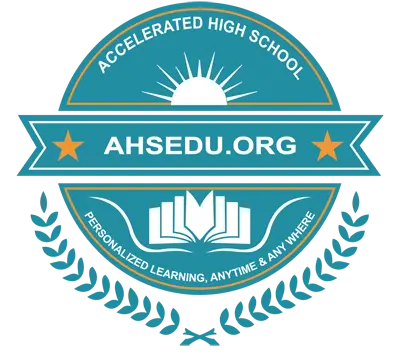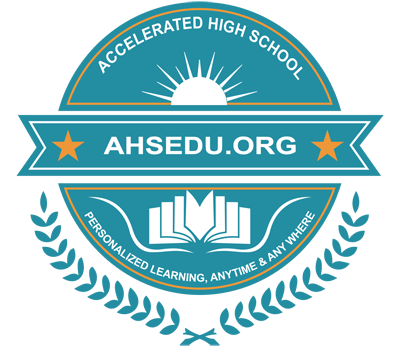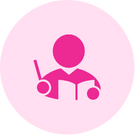Accelerated High School
Standardized Curriculum of English Language Arts-VI
The curriculum framework is designed to provide supplementary guidance to teachers and coaches as they develop tailored programs of study for their students. It supports lesson planning by highlighting key understandings, clarifying essential content knowledge, and outlining the cognitive skills students should develop and apply.
Teachers should recognize that skills developed at each grade level progress to subsequent grades. The English Curriculum Framework spans from Kindergarten to grade 12, forming a comprehensive instructional guide that equips students for success in higher education and their careers.
Teachers should review the Curriculum Framework to understand the scope of learning across each strand in both previous and subsequent grades. The Curriculum Framework's format helps teachers plan by highlighting the key concepts, knowledge, and skills that should be focus areas for each standard.
The Curriculum Framework is divided into two columns:
- Essential Understandings: and
- Essential Knowledge, Skills, and Processes.
The purpose of each section is explained below:
Teacher Notes
This section includes background information for the teacher. It contains content that may extend the teachers’ knowledge of the standard beyond the current grade level. This section may also contain best practices, instructional strategies, and suggestions that will help teachers plan lessons focusing on integrating the standard(s). The Teacher Notes are found at the beginning of each strand in the English Curriculum Framework.
Essential Understandings
This section delineates the key concepts and ideas that all students should grasp to demonstrate an understanding of the Standards of Learning. These essential understandings are presented to facilitate teacher planning.
Essential Knowledge, Skills, and Processes
Standards are expanded in the Essential Knowledge, Skills, and Processes column. What each student should know and be able to do in each standard is outlined. This is not meant to be an exhaustive list, nor is it a list that limits what is taught in the classroom. It is meant to identify the key knowledge, skills, and processes that define the standard. The Essential Knowledge, Skills, and Processes is not a one-to-one match of the Standards. If the standard is self-explanatory, there will be no additional explanation in this column. For example, the nonfiction reading strand requires students to identify the main idea; there is no corresponding entry in the EKSP column explaining how to identify a main idea.
The Curriculum Framework serves as a guide for Standards of Learning assessment development. Assessment items may not and should not be a verbatim reflection of the information presented in the Curriculum Framework. Students are expected to continue to apply knowledge, skills, and processes from the Standards of Learning presented in previous grades as they build expertise in English.
Strand 1: Communication and Multimodal Literacies
1.1 The student will develop oral communication skills.
a) Listen actively and speak using agreed-upon rules for discussion.
b) Initiate conversation with peers and adults.
c) Adapt or change the oral language to fit the situation.
d) Use appropriate voice level, phrasing, and intonation.
e) Participate in collaborative and partner discussions about various texts and topics.
f) Follow rules for conversation using the appropriate voice level in small-group settings.
g) Ask and respond to questions to seek help, get information, or clarify information.
h) Restate and follow simple two-step oral directions.
i) Give simple two-step oral directions.
j) Express ideas orally in complete sentences.
k) Work respectfully with others.
l) Increase listening and speaking vocabularies.
Teacher Notes:
- Teachers should provide daily opportunities for student communication and participation in oral language activities in a variety of settings
- Multimodal is the strategic use of two or more interdependent modes of communication where both modes are essential to convey the intended message. For example: graphics, written language, moving images, music, audio, presentation technologies, movement, etc.
|
Essential Understandings (All Students Should…) |
Essential Knowledge, Skills, and Processes (Students Are Expected To…) |
|
Understand that communication includes expressing needs, asking questions, and sharing information. |
Initiate conversations in different school settings. |
|
Recognize that the setting influences the rules for communication. |
Participate in collaborative discussions, building on others’ ideas and expressing opinions clearly. |
|
Realize that information can be gained by asking and answering relevant questions about a specific topic. |
Ask and respond to questions to check for understanding. |
|
Understand that choosing specific words makes communication clearer. |
Sustain two-person conversations through multiple exchanges. |
1.2 The student will demonstrate growth in oral early literacy skills.
Teacher Notes:
a) Listen and respond to a variety of print and media materials.
b) Tell and retell stories and events in sequential order.
c) Participate in a variety of oral language activities, including speaking and recitation.
d) Participate in creative activities, including physical, motor skills, and intellectual abilities.
|
Essential Understandings (All Students Should…) |
Essential Knowledge, Skills, and Processes (Students Are Expected To…) |
|
Understand that telling oral stories and participating in creative dramatics develop comprehension. |
Participate in a variety of oral language activities, such as: - Listening to stories and poems read aloud - Discussing stories and poems - Talking about words and their meanings - Giving reactions to stories and poems - Asking and answering questions to clarify understanding |
|
Understand that choral and echo speaking build oral literacy skills. |
Tell and retell stories/events in logical order by: - Retelling orally and through informal drama - Dictating retellings - Indicating first, next, and last events - Creating their own stories, poems, plays, and songs |
|
Participate in daily oral activities (choral speaking, reciting poems, rhymes, songs, and patterned stories). |
|
|
Participate in creative dramatics (classroom songs, plays, skits, group activities) to develop listening and speaking skills. |
Strand 2: Reading
The student will be immersed in a text-rich environment to develop phonological awareness, phonetic skills, vocabulary, and comprehension, and to use reading materials as sources of information and enjoyment. Having developed a concept of word and letter-sound correspondence, students will now concentrate on learning and integrating basic phonetic principles, decoding words in isolation and context, using meaning clues, and employing language and sentence structure to read and substantially increase their sight-word vocabulary.
The student will use a variety of strategies to read new words and will read familiar selections with fluency, accuracy, and expression. The student will continue to develop an understanding of fiction and nonfiction texts and respond to readings through group discussions and writing. The student will increase vocabulary and comprehension strategies through cross-content reading. Teachers will encourage the development of reading skills that are foundational to effective comprehension and critical thinking. These skills are essential for success in future postsecondary education and the workplace.
1.3 The student will orally identify, produce, and manipulate various phonemes within words to develop phonological and phonemic awareness.
a) Cite textual evidence and make relevant connections to support analysis of what the text says explicitly as well as inferences drawn from the text.
b) Determine a theme or central idea of a text and how it is conveyed through particular details; provide a summary of the text distinct from personal opinions or judgments.
c) Describe how a particular story’s or drama’s plot unfolds in a series of episodes, as well as how the characters respond or change as the plot moves toward a resolution.
Teacher Notes:
- These concepts and skills should be taught through systematic, explicit, direct instruction, individual and small-group activities, and time spent reading books and other print material.
- Teachers should provide opportunities for independent reading with options for student choice.
- Teachers need to read texts aloud to model language and expose students to new words, expand working vocabularies, and improve comprehension.
- Teachers should provide opportunities for students to apply strategies as they read and reread a variety of texts.
- Teachers should teach the theme with fiction texts and the main idea with nonfiction texts. Please note these terms are not interchangeable.
- Please note that although the strands are developed separately, teachers should seamlessly integrate all strands.
Thematic units are one approach.
Teachers should have students write about what they have read.
|
Essential Understandings (All Students Should…) |
Essential Knowledge, Skills, and Processes (Students Are Expected To…) |
|
Understand that all print in English follows predictable patterns. |
Demonstrate the concept of word by: |
|
Understand that written text is made up of letters, words, and sentences. |
Differentiate between letters and words by recognizing spaces between words in sentences. |
|
Recognize that a sentence starts with a capital letter and ends with a period, question mark, or exclamation point. |
1.4 The student will apply knowledge of how print is organized and read.
a) Read from left to right and from top to bottom.
b) Match spoken words with print.
C) Identify letters, words, sentences, and ending punctuation.
|
Category |
What Students Should Do |
Examples / Applications |
|
Essential Understandings |
- Comprehend word meanings using context clues, discussion, and connections to familiar words. |
- Use context to figure out “reluctant” in a story. |
|
Asking About Unknown Words |
- Ask for the meanings of new or tricky words. |
- “What does expand mean? Is it like grow?” |
|
Sorting & Categorizing Words |
- Group words into categories. |
- Sort: mammals, reptiles, amphibians. |
|
Making Real-Life Connections |
- Relate new words to personal experiences or real-world contexts. |
- Connect “community” to their school or neighborhood. |
|
Using Vocabulary Across Subjects |
- Apply words learned in science, history, or math while reading or writing. |
- Use “ecosystem” in a science summary. |
|
Clarification of Meanings |
- Ask for explanations of unfamiliar words or ideas. |
- “Does dense mean thick or heavy?” |
|
Irregular Plurals |
- Correctly use irregular plural forms. |
- man → men |
1.5 The student will use semantic clues and syntax for support when reading.
a) Use words, phrases, and sentences.
b) Use titles and pictures.
c) Use information in the story to read words.
d) Use knowledge of sentence structure.
e) Reread and self-correct.
|
Category |
What Students Should Do |
Examples / Applications |
|
Essential Understandings |
- Recognize that English writing follows consistent rules and patterns. - Understand that written text is made of letters, words, phrases, and sentences. |
- Identify how a paragraph builds from sentences. - Notice how punctuation changes meaning. |
|
Tracking and Structure |
- Follow print accurately across multiple lines and paragraphs. - Match spoken language to written sentences. |
- Read a passage aloud while pointing to each line. - Track dialogue in novels to see who is speaking. |
|
Differentiating Units of Text |
- Distinguish between letters, words, and sentences by understanding spacing and punctuation. |
- Spot the difference between “its” and “it’s.”- Break a paragraph into sentences. |
|
Sentence Boundaries |
- Recognize how sentences begin and end, and why punctuation matters. |
- “Where are you going?” (question)- “I can’t believe it!” (exclamation)- “She walked home.” (statement) |
|
Writing Accuracy |
- Apply capitalization and punctuation correctly in writing. |
- Start every sentence with a capital letter.- End with the correct punctuation mark. |
1.6 The student will expand vocabulary and use word meanings.
a) Discuss meanings of words in context.
b) Develop vocabulary by listening to and reading a variety of texts.
c) Ask for the meaning of unknown words and make connections to familiar words.
d) Use text clues such as words or pictures to discern the meanings of unknown words.
e) Use vocabulary from other content areas.
f) Use singular and plural nouns.
g) Use adjectives to describe nouns.
h) Use verbs to identify actions.
|
Category |
What Students Should Do |
Examples / Applications |
|
Essential Understandings |
- Use a variety of strategies to decode, understand, and confirm the meaning of unfamiliar words. |
- When reading, combine context clues, root words, and punctuation to clarify meaning. |
|
Vocabulary Development |
- Expand vocabulary by recognizing root words and their inflectional forms. |
- Root: decide → decides, decided, deciding.- Root: act → action, actor, active. |
|
Context Clues |
- Use sentence-level clues to figure out word meanings. |
- “The arid desert was hot and dry.” → arid = dry. |
|
Predictions & Inferences |
- Use titles, visuals, and background information to predict word meanings. |
- Title: The Great Migration → predict “migration” relates to movement. |
|
Confirming Understanding |
- Re-read text or use visuals to double-check word choice and meaning. |
- If “current” seems confusing, reread to see if it means present time or water flow. |
|
Monitoring Comprehension |
- Notice when a sentence doesn’t make sense and self-correct. |
- “He herd the music.” → recognize herd is incorrect; correct to heard. |
|
Fluent Reading |
- Use intonation, pauses, and em |
1.7 The student will use simple reference materials.
a) Use knowledge of alphabetical order by first letter.
b) Use a picture dictionary to find the meanings of unfamiliar words.
1.8 The student will read and demonstrate comprehension of a variety of fictional texts.
a) Preview the selection.
b) Set a purpose for reading.
c) Related previous experiences to what is read.
d) Make and confirm predictions.
e) Ask and answer who, what, when, where, why, and how questions about what is read.
f) Identify characters, setting, and important events.
g) Retell stories and events, using beginning, middle, and end in a sequential order.
h) Identify the theme.
i) Read and reread familiar stories and poems with fluency, accuracy, and meaningful expression.
1.9 The student will read and demonstrate comprehension of a variety of nonfiction texts.
a) Preview the selection.
b) Use prior and background knowledge as context for new learning.
c) Set a purpose for reading.
d) Identify text features such as pictures, headings, charts, and captions.
e) Make and confirm predictions.
f) Ask and answer who, what, where, when, why, and how questions about what is read.
g) Identify the main idea.
h) Read and reread familiar texts with fluency, accuracy, and meaningful expression.
Strand 3: Writing
At the sixth-grade level, reading and writing will develop together. Students will be given daily opportunities to write and read their writing. The student will write in a variety of forms to communicate ideas. As their knowledge of letter-sound correspondence and their sight-word vocabulary increases, they will be able to use these skills to put their ideas and thoughts on paper. With teacher guidance and support, they will also begin to revise and edit selected pieces of their writing for a specific audience. Teachers will encourage the development of writing skills that are foundational to effective written communication and critical thinking. These skills are necessary for success in future postsecondary education and the workplace.
Teacher Notes:
• Teachers should model the writing process for students.
• Teachers should refer to examples of writing in mentor texts.
• The focus of writing in first grade is narrative, descriptive, and opinion.
• Teachers should provide opportunities for students to express opinions with a reason, both orally and in writing.
1.10 The student will print legibly in the manuscript.
a) Form letters accurately.
b) Space words within sentences
1.11 The student will write in a variety of forms, including narrative, descriptive, and opinion.
a) Identify the audience and purpose.
b) Use prewriting activities to generate ideas.
c) Focus on one topic.
d) Organize writing to suit the purpose.
e) Revise by adding descriptive words when writing about people, places, things, and events.
f) Write to express an opinion and give a reason.
g) Use letters to phonetically spell words.
h) Share writing with others.
1.12 The student will edit writing for capitalization, punctuation, and spelling.
a) Use complete sentences.
b) Begin each sentence with a capital letter and use ending punctuation.
c) Use correct spelling for commonly used sight words and phonetically regular words.
Strand 4: Research
The student will continue to research to answer questions and solve problems by using available resources. Teachers will encourage the development of research skills that are foundational to effective critical thinking and responsible use of information. These skills are necessary for success in future postsecondary education and workplace environments.
Teacher Notes:
Teachers should have students collaborate in whole or small groups to generate topics, ask questions, and find and record information.
NOTE: Please note that first-grade students are not expected to complete research projects.
1.13 The student will conduct research to answer questions or solve problems using available resources.
a) Generate topics of interest.
b) Generate questions to gather information.
c) Identify pictures, texts, or people as sources of information.
d) Find information from the provided sources.
e) Record information.
Summary of Topics and Learning Outcomes for Grade 6
Reading strategies
A. Main Idea
A.1 Identify the main idea of a passage
B. Literary Devices
B.1 Interpret and classify figures of speech
B.2 Analyze the effect of figures of speech on meaning and tone
C. Analyzing Literature
C.1 Analyze short stories
D. Analyzing Informational Texts
D.1 Read and comprehend informational passages
D.2 Trace an argument in informational texts
E. Theme
E.1 Match quotations with their themes
E.2 Identify themes in short stories
F. Author’s Purpose, Point of View, and Tone
F.1 Identify the more formal sentence
F.2 Compare passages to determine tone
F.3 Identify the author’s purpose and point of view
G. Text Structure
G.1 Compare and contrast in informational texts
G.2 Match causes and effects in informational texts
G.3 Match problems with solutions and identify text structures
H. Visual Elements
H.1 Compare illustrations in literary and historical subjects
I. Comparing Texts
I.1 Compare texts from different genres
Writing Strategies
J. Editing and Revising
J.1 Use the correct frequently confused word
J.2 Correct errors with frequently confused words
K. Research Skills
K.1 Identify and correct plagiarism
L. Prefixes and Suffixes
L.1 Recognize words with pre-, re-, sub-, mis-
L.2 Recognize words with un-, dis-, in-, im-, non-
L.3 Recognize words with -ful, -less, -able, -ible
M. Organizing Writing
M.1 Order topics from broadest to narrowest
M.2 Organize information by topic
M.3 Use conjunctive adverbs as transitions
N. Developing and Supporting Arguments
N.1 Distinguish facts from opinions
N.2 Choose evidence to support a claim
N.3 Identify supporting details in informational and literary texts
N.4 Identify counterclaims
O. Creative Techniques
O.1 Use personification
Vocabulary
P. Synonyms and Antonyms
P.1 Choose the correct synonym or antonym
P.2 Identify synonyms and antonyms in context
Q. Greek and Latin Roots
Q.1 Use Greek and Latin roots as clues to meaning
Q.2 Use words as clues to identify roots
Q.3 Determine the meanings of Greek and Latin roots
R. Shades of Meaning
R.1 Describe differences between related words
R.2 Identify positive and negative connotations
S. Homophones
S.1 Use the correct homophone
S.2 Match definitions to sentences
S.3 Match sentences to definitions
T. Context Clues
T.1 Find words using context clues
T.2 Determine meaning using synonyms and antonyms in context
T.3 Use context to identify the meaning of a word
T.4 Determine domain-specific word meanings with picture clues
U. Analogies
U.1 Complete analogies
V. Reference Skills
V.1 Put words in alphabetical order
V.2 Use dictionary entries
V.3 Interpret dictionary definitions
V.4 Use thesaurus entries
Grammar and Mechanics
W. Nouns
W.1 Identify common and proper nouns
W.2 Form plurals of nouns ending in f, fe, o, y
W.3 Review plural formation
W.4 Identify plurals, singular possessives, and plural possessives
W.5 Correct errors with plural and possessive nouns
X. Sentences, Fragments, and Run-Ons
X.1 Identify sentence types: declarative, interrogative, imperative, exclamatory
X.2 Identify the complete subject or predicate
X.3 Identify the simple subject or predicate
X.4 Identify compound subjects and predicates
X.5 Distinguish complete sentences from fragments
X.6 Distinguish complete sentences from run-ons
X.7 Identify dependent and independent clauses
X.9 Identify simple, compound, and complex sentences
Y. Pronoun Types
Y.1 Choose between subject and object pronouns
Y.2 Use I and me in compound subjects/objects
Y.3 Use pronouns in compound subjects and objects
Y.4 Use possessive pronouns
Y.5 Choose between personal and reflexive pronouns
Y.6 Use reflexive pronouns
Y.7 Distinguish reflexive and intensive pronouns
Y.8 Identify relative pronouns
Y.9 Use who and whom correctly
Y.10 Use relative pronouns (who, whom, whose, which, that)
Z. Pronouns and Antecedent
Z.1 Identify pronouns and their antecedents
Z.2 Use pronouns that agree with antecedents
Z.3 Identify vague pronoun references
Z.4 Identify possible antecedents
Z.5 Correct inappropriate pronoun shifts
AA. Subject–Verb Agreement
AA.1 Use the correct subject and verb
AA.2 Use the correct verb with compound subjects
BB. Verb Types
BB.1 Identify main verbs and helping verbs
BB.2 Identify transitive and intransitive verbs
BB.3 Identify linking verbs, predicate adjectives, and predicate nouns
BB.4 Identify what modal verbs show
BB.5 Use the correct modal verb
CC. Adjectives and Adverbs
CC.1 Identify adjectives
CC.2 Order adjectives correctly
CC.3 Identify adverbs
CC.4 Use relative adverbs
CC.5 Distinguish between adjectives and adverbs
CC.6 Decide if a word is an adjective or an adverb
CC.7 Form and use comparative and superlative adjectives
CC.8 Use good, better, best, and bad, worse, worst correctly
CC.9 Form and use comparative and superlative adverbs
CC.10 Use well, better, best, and badly, worse, worst correctly
DD. Verb Tense
DD.1 Review irregular past tense
DD.2 Review simple past, present, and future tenses
DD.3 Correct inappropriate verb tense shifts
DD.4 Use and form progressive tenses
DD.5 Distinguish between past tense and past participle
DD.6 Use and form perfect tenses
EE. Conjunctions
EE.1 Identify and use coordinating conjunctions
EE.2 Identify subordinating conjunctions
EE.3 Use correlative conjunction pairs correctly
EE.4 Fill in missing correlative conjunctions
FF. Prepositions
FF.1 Identify prepositions
FF.2 Identify prepositions and their objects
FF.3 Identify prepositional phrases
GG. Punctuation
GG.1 Use commas in compound and complex sentences
GG.2 Use commas with direct address, introductory words, interjections, and interrupters
GG.3 Use commas with coordinate adjectives
GG.4 Use commas with non-restrictive elements
GG.5 Use dashes
HH. Contractions
HH.1 Use pronoun-verb contractions
HH.2 Use contractions with not
II. Formatting
II.1 Format titles correctly
II.2 Review formatting and capitalization of titles
JJ. Capitalization
JJ.1 Correct capitalization errors
JJ.2 Capitalize titles correctly







